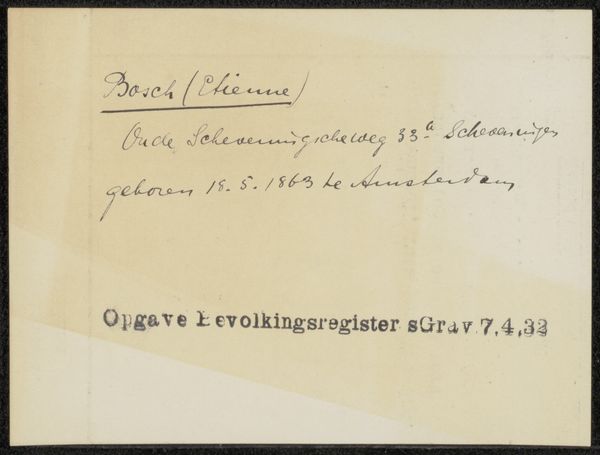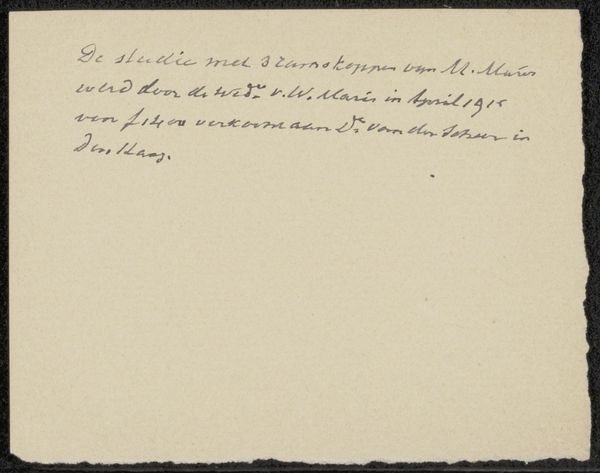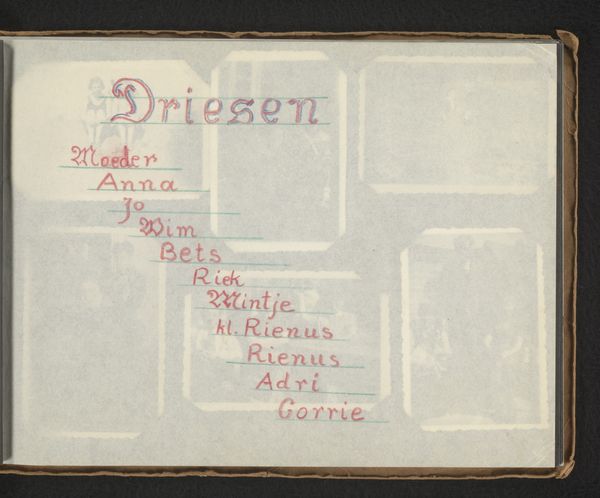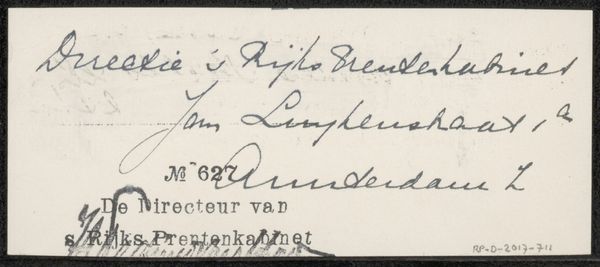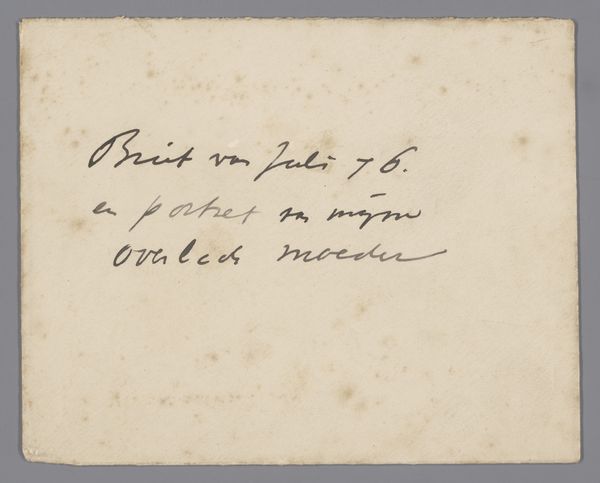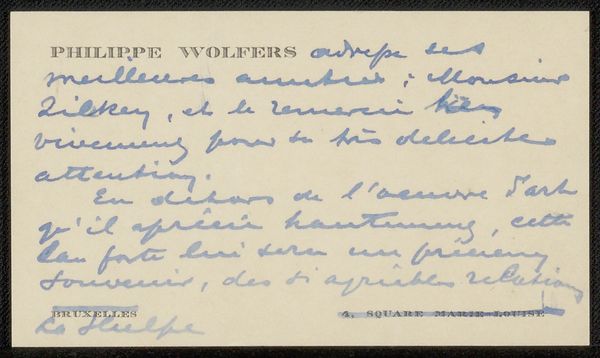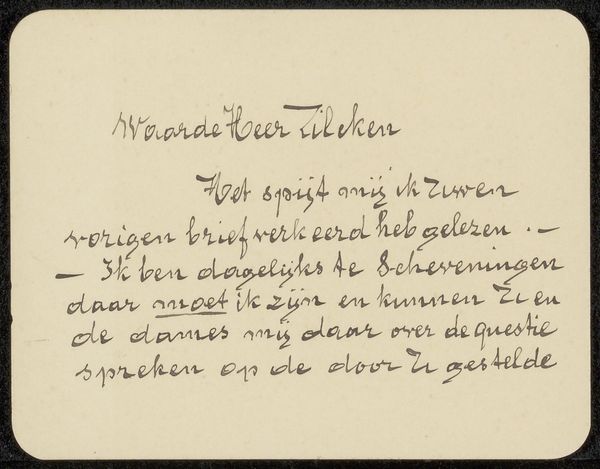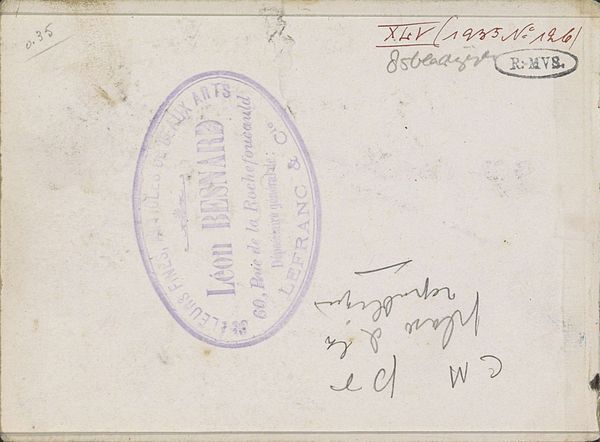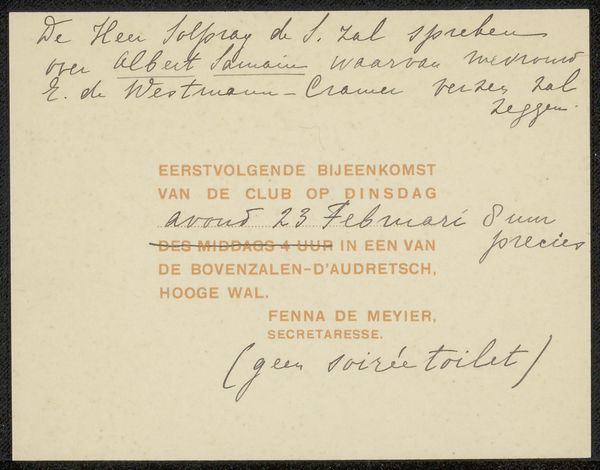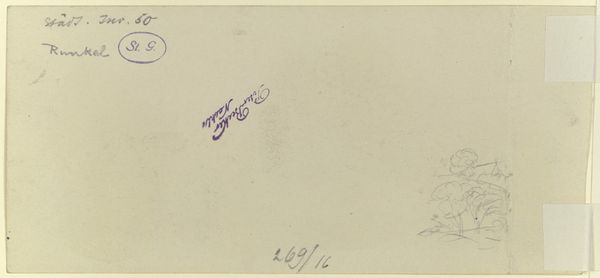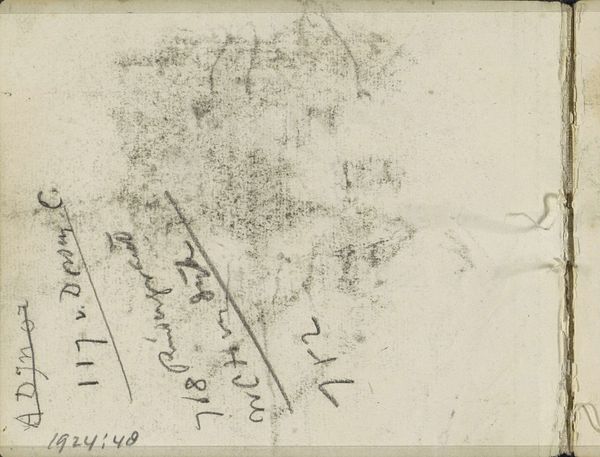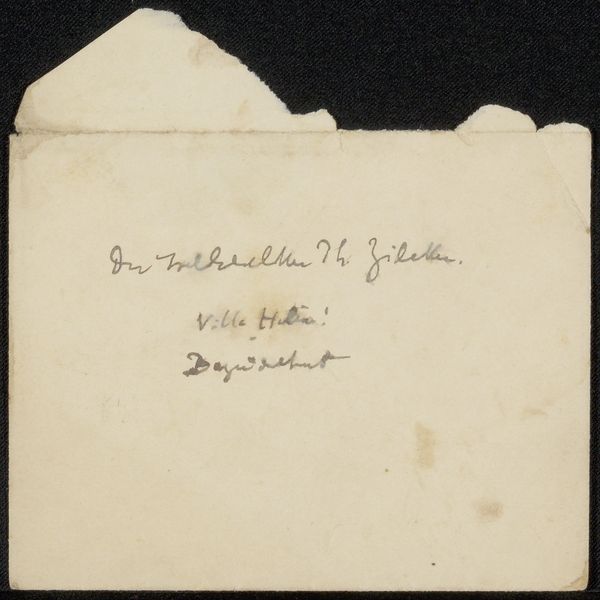
drawing, graphic-art, paper, typography, ink
#
drawing
#
graphic-art
#
paper
#
typography
#
ink
Dimensions: height 49 mm, width 119 mm
Copyright: Rijks Museum: Open Domain
Editor: Here we have Valentijn Edgar van Uytvanck’s *Naamkaart van Valentijn Edgar van Uytvank*, created sometime between 1906 and 1937. It's a name card, ink on paper, with typography reminiscent of art nouveau. It feels very personal and hand-crafted. What strikes you when you look at it? Curator: It's fascinating how a seemingly simple name card can offer insight into identity and societal expectations. The typography, for instance. Does it suggest anything about van Uytvanck's social positioning? Or the artistic circles he moved in? It's not just about stating a name; it’s about performing a certain identity. How might someone use typography to signal a certain class, profession or gender identity, or push back against social norms, through their name cards? Editor: That's a great point! The stylized lettering does feel deliberate, perhaps projecting an image of artistic sensibility. Did name cards like these function differently depending on gender? Curator: Absolutely! Consider the historical context. During this time, social rituals were heavily gendered. Men and women often used calling cards differently, reflecting societal roles. While men's cards primarily served business functions, women’s were often used for maintaining social connections. We must also consider how gender and class intersect with art during the period in question; does it embrace tradition or challenge convention? Editor: So analyzing the visual presentation becomes crucial. Curator: Exactly. Examining such a card as more than just an identifier, opens a window to understanding how identities are consciously and subconsciously constructed, circulated, and negotiated through visual culture. Editor: This has broadened my perception of what I initially took for granted. Looking closer, I realize how many questions it raises. Curator: Indeed. An object so small can speak volumes about an entire social and historical landscape when we engage with it critically.
Comments
No comments
Be the first to comment and join the conversation on the ultimate creative platform.
